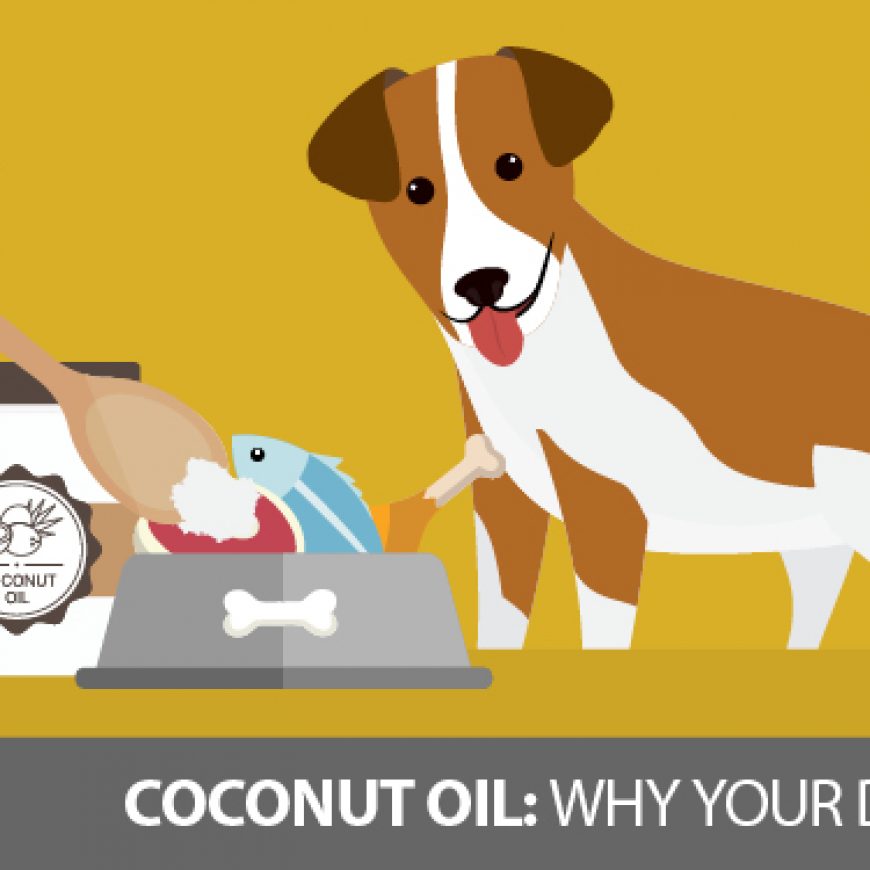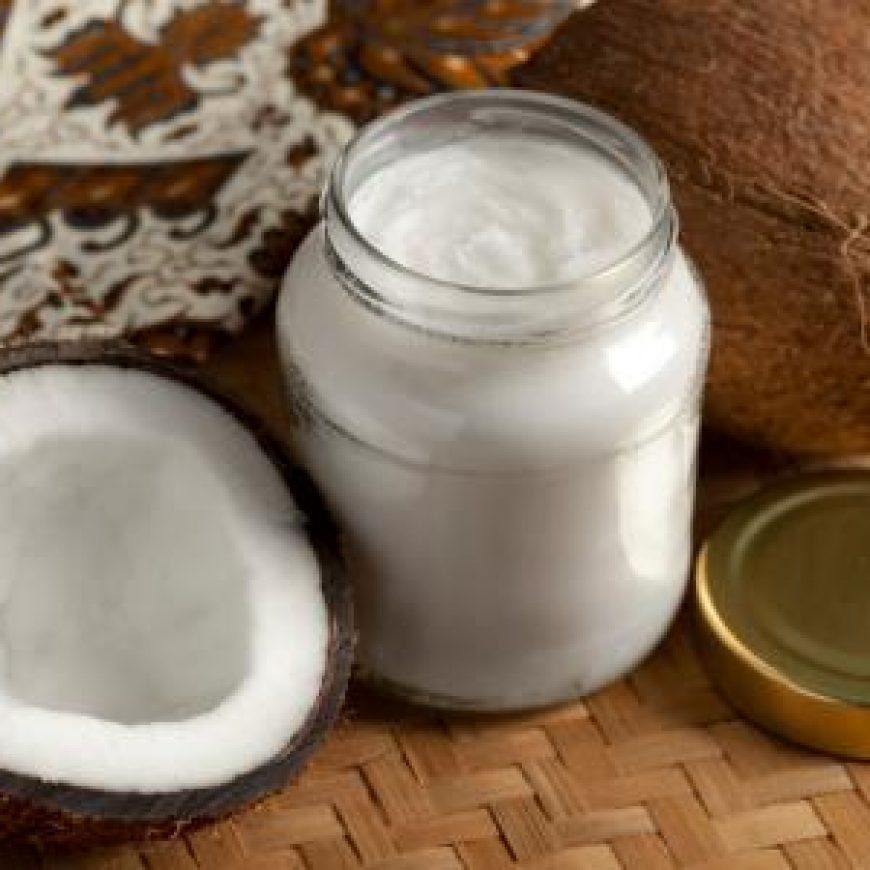You’ve probably heard it before: coconut oil is turned into ketones in the liver and other organs, providing an alternate energy source for cells that have become glucose intolerant. But what exactly are ketones? And if ketones are so great, why doesn’t the body make them out of other oils?
Your body’s energy factory
The fats we eat are comprised of three fatty acids bound to a glycerin molecule, hence “tri-glyceride.” Like everything else we consume, they need to be deconstructed into more foundational building blocks to be useful to the human body. Part of this process happens in the small intestine, where bile and enzymes combine to separate the glycerin from the fatty acid chains, leaving three fatty acids to be used for energy or storage.
 Long chain fatty acids (chains of 14 carbon atoms or greater), mostly found in vegetable seed oils and animal fats, are processed into energy units inside our cells—more specifically, inside the mitochondria. The mitochondria are our body’s little furnaces. Their efficiency determines the metabolic rate, and the higher the rate, the more fuel the furnaces burn.
Long chain fatty acids (chains of 14 carbon atoms or greater), mostly found in vegetable seed oils and animal fats, are processed into energy units inside our cells—more specifically, inside the mitochondria. The mitochondria are our body’s little furnaces. Their efficiency determines the metabolic rate, and the higher the rate, the more fuel the furnaces burn.
The fatty acids can’t get to the furnace themselves. They need to be transported by an amino acid sourced agent, carnitine. This process is regulated—the carnitine ferryman only comes when energy is needed—so the body doesn’t continue to fuel itself when no energy is required. This is great when food is hard to come by, so that precious fuel isn’t wasted. But it’s a bit disappointing when you’ve got another 15 pounds you’d like to lose!
Once inside the cell, the fatty acids go through a multi-turn cycle known as beta-oxidization, one turn for every two carbon atoms in the chain, in which the last two carbons are broken off and turned into energy units for the energy burning process. So a 14-carbon fatty acid goes through the cycle 6 times (the last break takes two and leaves two—job done!).
If the body cells don’t require energy at the moment, the fatty acid molecules are instead packaged for storage, where they’ll be retrieved in the event the body requires energy and none is available from the digestive process.
The MCT Advantage
Here is the significant difference. Medium chain (8 to 12 carbon atoms in the chain) and short chain (2 to 6 carbon atoms) fatty acids are able to enter the cells without waiting for the carnitine transport. Thus, the fuel burning process doesn’t undergo the same regulation as with long chain fats, and your body overproduces those little two chain energy units.
As part of this increased accessibility, medium and short chain fats are made available to other major organs of the body, primarily the liver, but also the heart and the brain, where they are converted into ketones, a different sort of energy unit. Imagine that medium chain fatty acids have been turned into energy before long chain fats have even been made available.
Ketones vs Glucose
Carbohydrates, when digested, are turned into glucose for energy. When the body’s energy requirements have been satisfied, and there is still glucose left over, the body restructures the glucose into fat molecules for storage. In order for the body to use the glucose as energy, insulin is required, like a key in the lock, to open the door for the glucose. Again, it’s a regulating mechanism to ensure the furnace doesn’t keep burning when no energy is required.
Like glucose, ketones can provide the body with energy. Unlike glucose, however, no insulin is required for the cells to accept the ketones. This makes ketones necessary for people whose cells have become insulin resistant. One area this has had an incredible impact on is in neurodegenerative diseases like dementia, Alzheimer’s, and Parkinson’s. Brain cells that are no longer able to accept glucose for energy can thrive on the ketones supplied by the ingestion of medium chain triglycerides.
Ketone Benefits
 The corollary of this benefit is that medium chain fats provide energy at a similar rate to carbohydrates, without causing a spike in blood sugar. No stress is placed on the pancreas to create insulin, making MCT’s an excellent fuel source for those having, or wanting to avoid, insulin related issues.
The corollary of this benefit is that medium chain fats provide energy at a similar rate to carbohydrates, without causing a spike in blood sugar. No stress is placed on the pancreas to create insulin, making MCT’s an excellent fuel source for those having, or wanting to avoid, insulin related issues.
A second thing that makes ketones special is that they cannot be reconverted to fatty acids for storage. Once created, they are either used or expelled, primarily as acetone during respiration. That’s right: energy that you have ingested, in the form of a tasty meal, is either used or dumped—not stored. This is a great benefit for societies living in abundance.
Are medium chain oils the only oils that can create ketones? Scientists have recently shown that Linolenic Acid, popularly known as Omega 3, is another efficient source for ketone creation within the body. It’s only drawback is that it is a long chain oil, requiring the carnitine ferryman for processing. Nevertheless, there is a symbiotic relationship in the body’s metabolism when both Linolenic Acid and medium chain oils are ingested together.
Coconuts!
Coconut oil, as the most readily available source of medium chain fatty acids, is an excellent energy source. It increases the metabolic rate and reduces the amount of fat stored, thanks to its convertibility to ketones. It’s not surprising, then, that virgin organic coconut oil is making its way into more and more kitchens across North America. It deserves its place as the primary cooking oil for those wanting to watch their waist lines while defending against the ravages of degenerative diseases. For those requiring therapeutic levels of ketones, a mix of coconut oil, MCT oil, and an Omega 3 rich oil provides the ultimate solution.
Quotation: alphahealth.ca

 English
English



Add Comment